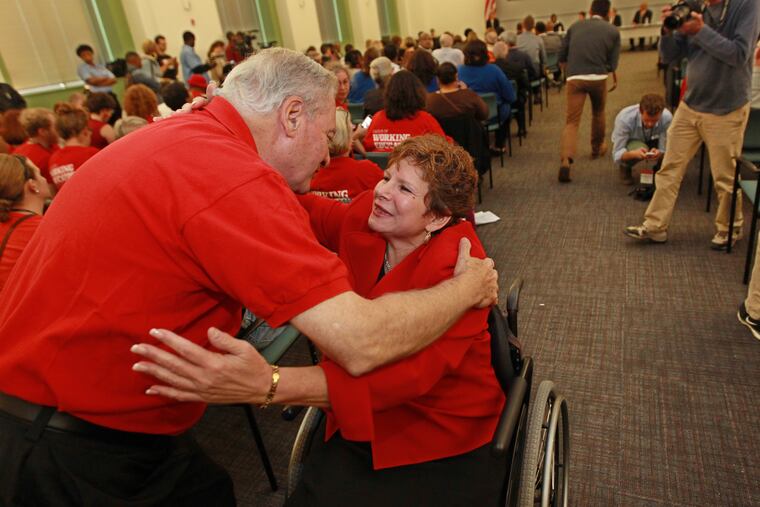People with disabilities are increasing their ranks in elected office. But they’re still underrepresented.
The study found growth in the proportion of elected officials who have a disability, an indicator of greater acceptance of disabled people.

Nine years into State Sen. Christine Tartaglione’s political career, she was involved in a boating accident that left her with a spinal injury. Ever since the 2003 accident, as Pennsylvania’s only state senator in a wheelchair, she has advocated for people with disabilities and marked Disability Awareness month every October.
“My life changed in a heartbeat,” Tartaglione said in an interview.
She may be alone in Harrisburg, but she’s part of a growing group of elected officials with disabilities across the country, according to a recent study. The study, released by Rutgers University earlier this month, found that 10.3% of full-time elected officials at the federal, state, and local levels between 2013 and 2017 had a disability. That was an increase from 8.5% between 2008 and 2012, the researchers said. But people with disabilities remain underrepresented overall: About 15% of the U.S. adult population is disabled.
Lisa Schur, a professor at Rutgers and a co-author of the study, said military veterans, Native Americans, and young people are particularly prominent among the ranks of disabled elected officials. She said more people with disabilities have been running for office ever since passage of the Americans with Disabilities Act in 1990.
"These are people who’ve grown up with ADA regulations and education laws in place,” Schur said. “While the stigma is still there, it’s less than what it used to be.”
The study also found a greater proportion of disabled elected officials at the local level than at the state and federal levels.
Sarah Blahovec, a disability-rights advocate, said the larger rate of local representation may be the result of voters simply knowing candidates better. Blahovec, an organizer for the National Council on Independent Living, which provides services for people with disabilities, said there are basic barriers for disabled Americans looking to run for office.
"It’s more challenging for someone to canvass in a wheelchair,” she said.
Lauren Alden, an organizer for Liberty Resources, a Philadelphia-based group that advocates for the disabled, said that “voters really like to see themselves in candidates.”
"And the fact that we’re seeing more folks with disabilities running, it’s emboldened a lot of people to run and be a part of the decision-making process,” she said.
And of course, elected officials with disabilities aren’t the only politicians who advocate for the disabled.
“When my daughter was born with Down syndrome, I noticed how people treated her and I didn’t like it," said New Jersey State Sen. Stephen Sweeney, who has pushed legislation to crack down on abuse of people with developmental disabilities. “I would say talk is cheap at times, anyone you talk to in office says they’ll support you up until the point where they fund the program. Politicians don’t always have the same priorities, but when it’s a priority, that’s when you see a difference.”
For the Rutgers study, researchers analyzed data from the U.S. Census Bureau’s American Community Survey, which, among many other things, measures disability based on hearing, visual, mobility, and cognitive impairments. To determine the proportion of disabled elected officials, the researchers looked at how people categorized their primary occupation, said Douglas Kruse, who co-authored the report. The study did not include elected officials on school boards or city councils, he said, because those are often part-time jobs.
Twelve percent of elected officials in local government have a disability, compared with 6.9 percent at the state level and 6.3 percent in Congress.
"Congress is a historically unrepresentative body for the United states,” said Nancy Hirschmann, a political science professor at the University of Pennsylvania who has studied civil rights for people with disabilities. “In fact, if the study is accurate, disabled people are actually doing better than other groups.”